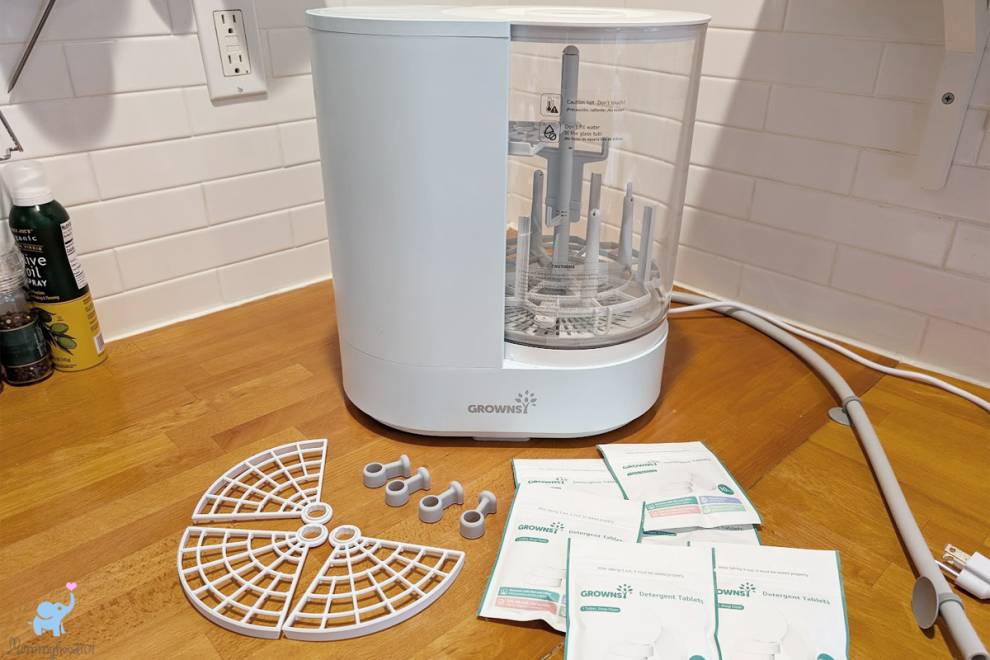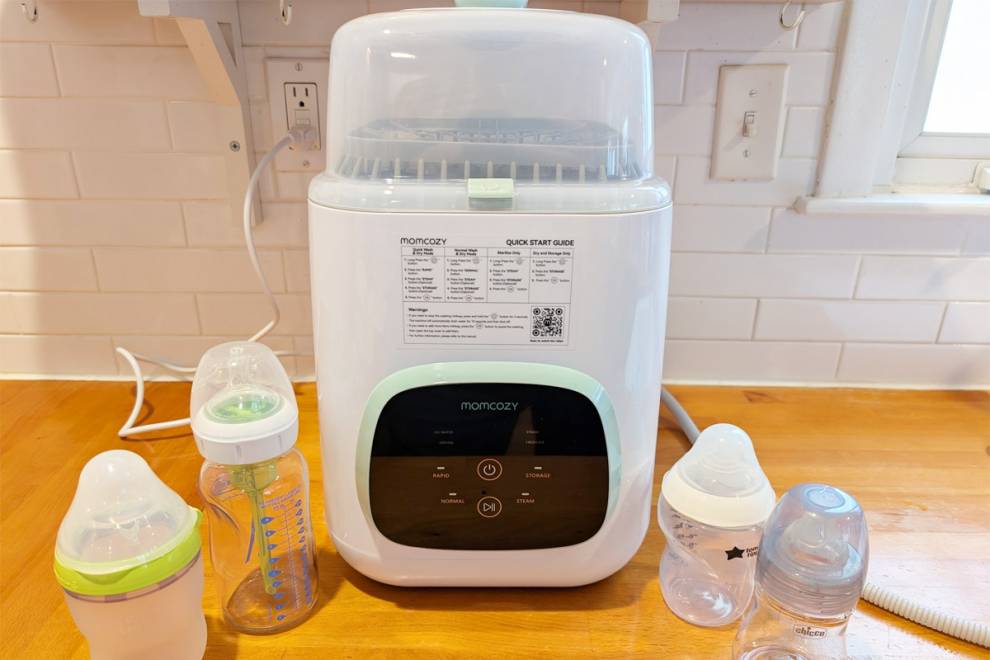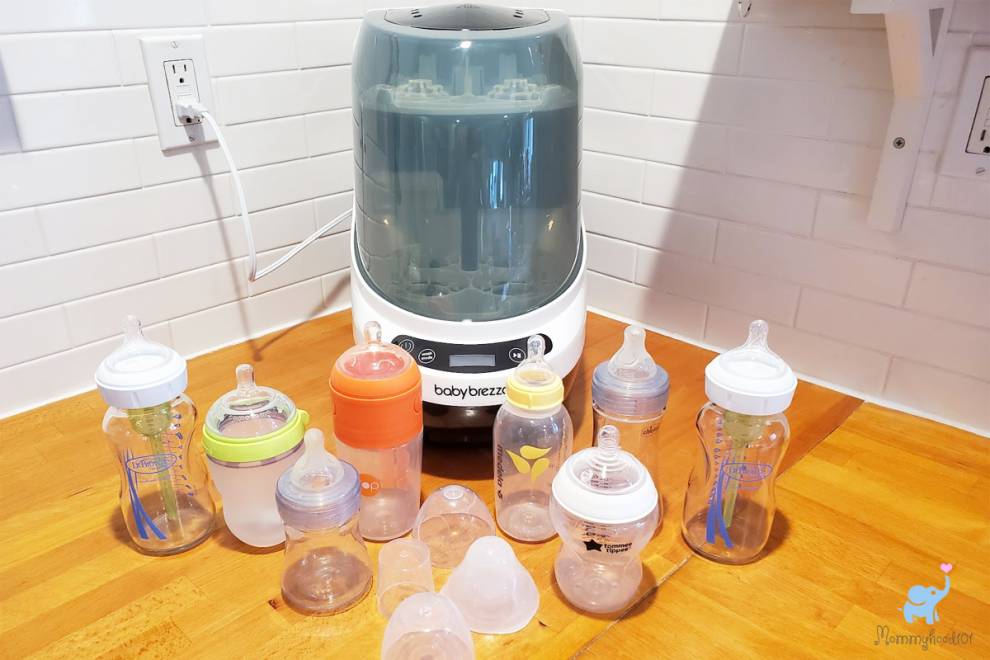Read your little one's mind with these helpful signs that your baby is ready to eat.

Mommyhood101 independently tests and curates baby gear to help you make informed decisions. If you buy products through links on our site, we may earn a commission.
Both new and experienced breastfeeding mothers want what is best for their children, and no one ever said breastfeeding was easy!
In addition to soreness, changes in appetite, learning various feeding positions (check out our list of the best nursing pillows!), and sleeplessness, many mothers also wonder if their babies are receiving enough milk.

They know their babies are nursing, but without a measurement standard like the ounce marks on baby bottles, breastfeeding mothers must rely on other signals to indicate how much breast milk is being consumed.
How to Recognize Hunger in a Baby
During the first weeks of life, infants are hungry often. Breastfed infants will typically feed every 1 to 2 hours around the clock. To an adult who eats three meals a day, this may seem to indicate the child is not getting a sustainable amount of food.
However, it is important to remember, an infant’s stomach is much smaller than that of an adult. Babies need to eat more frequently because they can only hold a small amount at a time. Additionally, breast milk is incredibly easy to digest—this is a good thing—so while baby is quickly developing both cognitively and physically, metabolic needs call for more frequent nourishment.
Babies need to eat more frequently because they can only hold a small amount at a time, and breast milk is very easily digested.
One way to ensure babies are eating enough is to learn to recognize their feeding cues. Infants are hardwired to signal mothers when feeding is needed. Watching babies for hunger signals and recognizing patterns just before feeding times can help develop a strong and confident breast feeding routine.
Early Hunger Signals
When babies are at rest, but approaching a feeding, mothers may notice subtle movements that indicate a readiness to eat:
- Light Restlessness: Babies may begin to fidget or stir in response to hunger.
- Opening Mouth: When infants are at rest and begin opening their mouths, this may mean it is time to feed.
- Rooting: This is a pretty strong and highly-recognizable signal. When rooting, infants will turn their heads from side to side seeking a food source. Additionally, their mouths will open and they will attempt to latch onto anything that brushes their faces.
Tip: If you think your baby is rooting, gently stroke one cheek and then the other. A rooting baby will turn from side to side, following your hand to latch.
Later Hunger Signals
As a baby's hunger progresses, signals will become harder to miss:
- Strong Fidgeting: Progressed fidgeting includes sharper, larger motions including head turning, arm waving, and kicking. At this point, babies are visibly uncomfortable.
- Hand in Mouth: In their efforts to find food, infants may attempt to latch onto their fists. A key signal here is tongue movement and sucking.
Serious Hunger Signals
- Crying: The American Academy of Pediatrics identifies crying as a “late sign of hunger.” If an infant exhibits earlier hunger cues and progresses to the point of crying, it is important to calm the baby and feed as soon as possible.
- Physical Agitation: Physical signals will be wild and uncontrolled. A very hungry infant may flail arms and legs, squirm, and thrash.
- Redness: As an infant’s muscles tense while crying and flailing, redness may be noticeable in the face and neck.
Measuring Breastfeeding Volume
For mothers who are wondering if their babies are getting enough breast milk, one excellent measurement standard may be found right under their noses. Wet and soiled diapers indicate meal processing. The International Lactation Consultant Association outlines expected output outcomes for “healthy, full-term, breastfeeding infants” including a minimum of least three soiled diapers per day after Day 1 and a minimum of six wet diapers per day by Day 4.
These guidelines, of course, will vary from child to child. Mothers should recognize their babies individuals (rather than statistical averages), and reflect on these general guidelines as they learn to recognizing their babies’ output patterns to help ease concerns regarding breast milk production. Given how many dirty diapers you'll be dealing with, be sure to check out our reviews of the best diaper pails and sensitive baby wipes!
Cluster Feeding
Even vigilant mothers who notice signs of milk supply, follow hunger cues, and track wet and soiled diapers can still be thrown off by a bout of cluster feeding. Cluster feeding is a term used to describe periods of more frequent nursing sessions than usual. Cluster feeing is typical when babies are going through growth spurts, which La Leche League USA indicates occurs around Day 7-10, three weeks, six weeks, three months, six months, and nine months. In addition to growth spurts, cluster feeding could also indicate that a babies are sick or feeling uncomfortable.
Cluster feeding can be frustrating, but it is good to remember that the more a baby nurses, the more milk breasts will produce. So, rather than worrying about cluster feeding indicating low production, mothers can think of it as a jump start for the milk supply! If you find that your nipples are getting sore and chapped from a bout of cluster feeding, be sure to check out our reviews of the best nipple balms and creams.
Producing Enough Breast Milk
For new breastfeeding mothers, or mothers who have had significant time between pregnancies, it may be difficult to ascertain whether or not milk has come in. First-time mothers will produce a thick substance called colostrum for the first three or four days post partum. After this point, the breasts will fill with breast milk (this is known as “milk coming in”). Breasts hold a varying amount of milk depending on babies’ birth sizes and weights. In fact, mothers using breast pumps may notice that each breast can hold different amounts! Average, full-term babies consume about 1-2 ounces of breast milk (or formula) per feeding.
Once milk has come in there are some highly noticeable sensations and physical changes:
- Feeling full/leaking: Breasts will actually become heavier (full of milk) and grow larger; size and shape will change throughout the day. Mothers may notice bra discomfort leading up to feedings. The breasts will also leak when they become too full or stimulated. Be sure to invest in one of our top-rated nursing bras to keep things comfortable.
- Firmness: When milk is heavy, breasts will become firm to the touch. Some mothers may also feel this firmness in their armpits as breast tissue extends under the arms. If a breastfeeding mother waits too long to nurse or bottle feed over a nursing session, the breasts can become painfully swollen and engorged.
- Let down: Breast milk let down is the physical sensation of breast milk rushing through milk ducts toward the nipples. This occurs near or at the start of a feeding. Strong or heavy let down can actually forcefully eject breast milk from the nipple.
- Breasts feel softer after nursing: Immediately following a feeding, breasts will feel empty and soft. They may appear visibly smaller until the next scheduled feeding.
As with any concern, it is important to keep health care professionals in the loop, and seek advice and counseling when needed. Breastfeeding is both a challenge and a rewarding journey, and there are many tools and resources available to breastfeeding mothers. These include local breastfeeding support groups and breastfeeding counselors (at La Leche League or Breastfeeding USA), or check out the wealth of online breastfeeding resources available at KellyMom.










